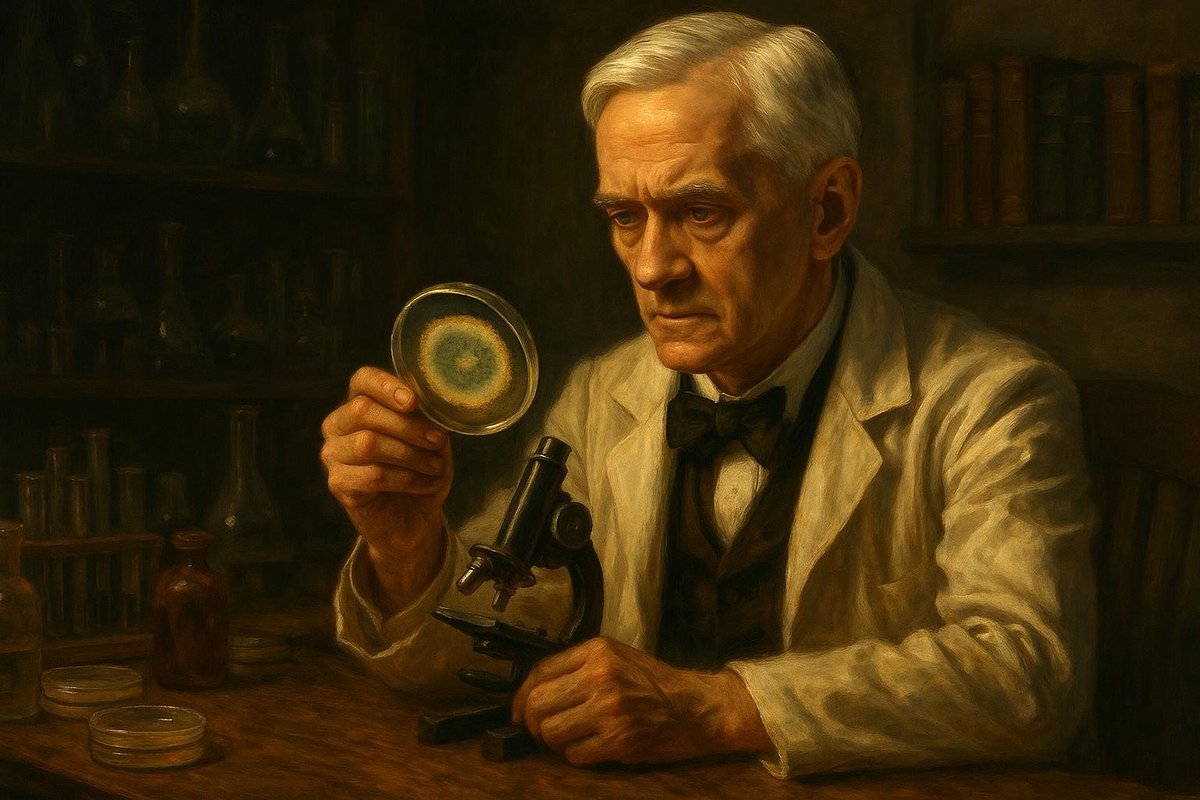
In the bustling laboratories of 1928, many scientists were hard at work, but none could foresee the accidental revelation that would revolutionize modern medicine. Alexander Fleming, a Scottish bacteriologist, left his lab in a somewhat untidy state before heading on a vacation. Upon his return, he noticed something extraordinary: a petri dish of Staphylococcus bacteria had been contaminated by a mold, and, intriguingly, the bacteria surrounding the mold had been killed off. What could this mean for medical science? This serendipitous observation marked the beginning of what we now celebrate as the discovery of penicillin.
Origin of a Medical Marvel
Before the advent of penicillin, bacterial infections were a leading cause of death worldwide. From minor cuts to major surgeries, the risk of fatal infections loomed large. People lived with the constant fear of diseases like pneumonia and sepsis, which often claimed lives indiscriminately.
- Infections were responsible for high mortality rates.
- Antiseptic methods were primitive and not always effective.
- Doctors had limited tools for combating bacterial diseases.
Interestingly, this all changed with the chance discovery of a mold. The mold, later identified as Penicillium notatum, grew in Fleming’s lab in London, England. It grew in a forgotten corner, unnoticed and unappreciated, until its antibacterial properties were unveiled. This mold was about to flip the script on how infections were treated forever.
The Key Figures Behind the Breakthrough
While Alexander Fleming is often credited with the discovery of penicillin, he was not alone in this journey. The story of penicillin’s development is a tapestry woven by many brilliant minds. After Fleming’s initial observation, the task of turning the mold’s potential into a viable treatment fell to a team of scientists.
- Howard Florey, an Australian pharmacologist, took up the challenge.
- Ernst Boris Chain, a biochemist, worked alongside Florey to purify and mass-produce penicillin.
- Norman Heatley devised methods to extract and stabilize the active compound.
These key figures, working at the University of Oxford, transformed Fleming’s curiosity into a therapeutic reality. Their dedication and innovation bridged the gap between a surprising laboratory observation and a revolutionary medical treatment.
The Turning Point in Medical History
The journey from discovery to application was not straightforward. It required relentless testing and validation. One of the greatest challenges was finding a method to produce penicillin in sufficient quantities to treat infected patients effectively.
- The team faced numerous technical obstacles, especially during wartime.
- Fleming’s mold was not easy to cultivate in large volumes.
- Florey and his team carried out the first successful clinical trials in 1941.
These trials were groundbreaking, proving penicillin’s ability to save lives. The turning point came during World War II when the demand for effective treatment soared. These efforts culminated in mass production, bringing hope to millions of soldiers and civilians alike.
Impact on the World: A New Era of Medicine
Penicillin changed the face of medicine, ushering in the antibiotic era. It became a powerful tool in combating bacterial infections, drastically reducing mortality rates and transforming healthcare.
- Penicillin saved countless lives during and after World War II.
- It paved the way for the discovery and development of other antibiotics.
- The medical landscape was forever altered, with antibiotics becoming essential in hospitals worldwide.
Of course, the impact of penicillin extends beyond medicine, influencing social and cultural spheres by enhancing life expectancy and improving quality of life. It stands as a testament to the profound effect of scientific discovery on society.
In conclusion, the accidental discovery of penicillin demonstrates the unpredictable nature of scientific research. Its legacy endures, reminding us of the potential for science to transform the world when curiosity meets perseverance.
Fuel Someone Else’s Curiosity
If you’ve found this story as fascinating as we do, share it with others who might appreciate a glimpse into the accidental discoveries that shape our lives. Start a conversation about the wonders of science and how a simple mold could save millions.

Leave a Reply